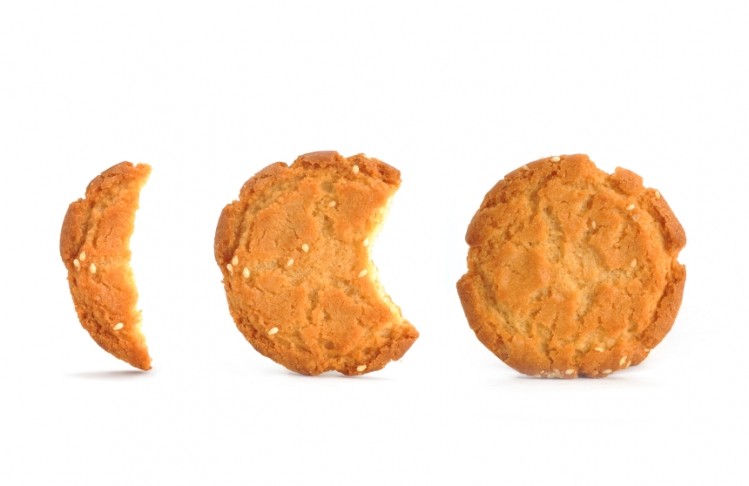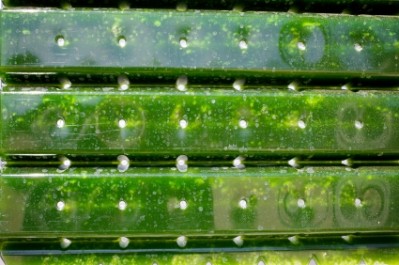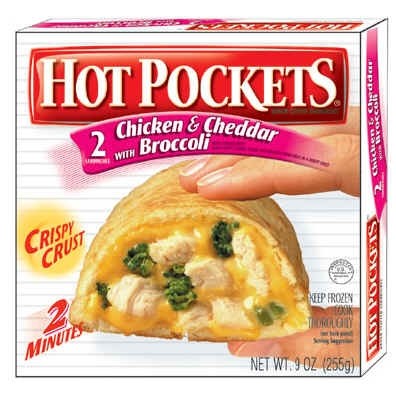Solazyme-Roquette’s algal flour promises exciting future for delicious, low-fat food

Consumer demand for healthy products is growing, but fat reduction in foods is complicated as fats play many roles in food, including adding texture, structure and flavor.
The imminent arrival on the market of Solazyme-Roquette Nutritionals’s high-lipid algal flour may solve many of these problems, however: “If you’d have told me we can make low-fat foods that taste like this, I would have said no way,” Leslie Norris, food applications development for Solazyme, told FoodNavigator-USA.com during a recent visit to the company’s HQ in South San Francisco.
During the visit, your correspondent sampled a range of algal flour products, including chocolate milk and honey mustard dressing, with a taste and mouth-feel as good, if not better, than their full-fat versions, but boasting reductions in fat by as much as 70 percent.
Olive oil-esque
The company’s algal flour does contain lipid (50 percent of the flour is lipid), but the composition is similar to olive oil, explained Norris. It also contains 20 percent soluble fiber and 8 percent insoluble fiber. The ingredient is self-affirmed GRAS (generally recognized as safe).
Ken Plasse, senior director, sales and marketing for Solazyme Nutritionals, explained that the new algal flour is for use as a “primary ingredient alternative to make mainstream processed foods healthier without compromising on taste”.
Chocolate milk formulated with 4.5 percent algal flour not only tasted like the real thing, but contained 16 percent fewer calories, 66 percent less saturated fat, and 71 percent less cholesterol than the full-fat chocolate milk sitting beside it.
Shortbread cookies formulated with 7 percent algal flour and one-third the butter used in normal shortbread came with a label noting a 50 percent reduction in fat and a 57 percent reduction in saturated fat.
Other product prototypes presented included honey mustard dressing boasting 74 percent fewer calories and an 85 percent reduction in fat, compared to full-fat dressing, and a frozen dessert containing 38 percent fewer calories, and a 70 percent reduction in saturated fat, compared with a Haagen Dazs chocolate ice cream. And the algal dessert tasted creamier.
Solazyme-Roquette Nutritionals is gearing up for a soft launch of its new algal flour this summer, with an official launch scheduled for the latter end of 2011. The JV’s first plant should be on-line by Q4 of 2011, said the company, and products are expected on shelves between the middle of 2012 and early 2013.
JV
Solazyme announced a team-up with France’s Roquette in November 2010, and the joint venture named Solazyme-Roquette Nutritionals was launched.
Unlike other algae initiatives, the joint venture is not targeting individual molecules like DHA omega-3, but “at foods for everyday, microalgal ingredients that give taste, health and functionality, but are also affordable and sustainable”, said Roquette’s Philippe Caillat at the time of the announcement.
What next for algae?
Solazyme’s Plasse noted that more can be expected from algae: “Algae has an ability to naturally create new novel multifunctional ingredients that can provide significant health and functional advantages not available in other products on the market today. It also hits many of today's top trends including vegan, gluten free, and sustainable production.”
Plasse added that the supplement market already has established algae-derived ingredient, like omega-3, chlorella, and spirulina. “Mainstream food ingredients are up and coming - Algal oils, protein and fibers, or unique combinations of each (like Algal Flour) show the most potential,” he added.

















